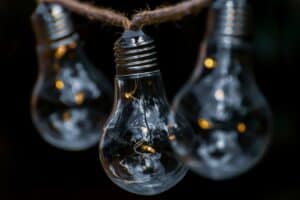Why a stable power grid is so important
 31 Maret 2023
31 Maret 2023
Photo: Pixabay/jonasschloegljs
Modern nations rely on their power grids as it is these grids that enable households, workplaces, stores and services to function. However, in the United States the grid infrastructure is increasingly unstable, which is a concern for the government — and citizens in the country.
The U.S. power grid is a multi-part system. A power plant produces electricity which travels along transmission lines to distribution centers and is relayed to homes and businesses.
When stable, it works to control the supply and demand of electricity. The grids currently rely on fossil fuels, such as coal and gases, like petroleum and natural gas. There is concern about carbon emissions from these fuels. However, the Environmental Protection Agency has limited power to regulate those emissions.
Keeping a stable power grid with fossil fuels is a tricky balance — but it’s necessary to live life as we know it.
Why the grid becomes unstable
There is growing concern about the stability of the U.S. power grid. There are a few factors that lead to increased instability.
Most of the country’s newer power lines are from the 1970s with a predicted 50-year lifespan. As the now-overloaded lines break down, regulators, power companies and landowners are struggling to agree on when and how to replace them.
When new structures are built, customers pay for it via a surcharge, which complicates the situation. Stakeholders can’t reach an agreement on how much to charge their users.
Since U.S. citizens are unable to choose their power company, the fee could lead to reduced power use or the inability to afford power costs at all.
Extreme weather is the top cause of blackouts in the U.S. Intense heat or cold can weaken the current grid to the point that it’s unable to supply power to those who need it most. Climate change is another contributing factor to more frequent and intense storms, leaving the grid more vulnerable than ever.

Some areas are making strides in producing new, sustainable energy resources. However, one unfortunate side effect is that companies will neglect the current grid as they prepare the new energy sources.
Dangers of instability
With power lines weakening and weather getting more intense, it’s no wonder that the grid experiences frequent instability. Each year, experts predict an increasing number of outages due to these factors. Various blackouts (overvoltages) and brownouts (undervoltages) happen every month and lead to several complications.
When the power goes out, so do many of the machines we depend on to make and spend our money. Cashiers can’t run debit or credit transactions and may not be able to get into the cash register to deliver change. Electronic fund transfers are interrupted and physical checks may be unable to be cashed, leading to unpaid wages for workers.
Even if the power doesn’t completely go out, devices could work less efficiently, causing poor performance at businesses and manufacturing plants. Gas pumps also require electricity, so outages can delay necessary deliveries.
Without power, the country is both literally and figuratively in the dark. Both localized and national security systems rely on the power grid to perform surveillance and take action if systems detect a threat.
There is concern about the grid’s vulnerability to cyber attacks, which could let enemies into our digital systems while the country is blind.
In addition, when power disappears, people’s ability to stay healthy in their own home diminishes. Extreme weather leads to power outages that can prevent residents from using air conditioning systems or heaters. These losses can put them at a severe risk of developing hypothermia or heat stroke.
Perishable food only lasts so long since refrigerators need electricity to keep the food at a safe temperature for consumption. A lack of light can also make homes more dangerous to navigate safely, especially for young kids and older adults. Since hospitals rely on power to treat their patients, outages put the sickest patients at risk.
When any of the previous problems occur, it’s necessary to communicate with family, friends, neighbors and officials. However, our increasingly digital society means that the ability to do so might be short-lived. For many, communication relies on having a charges, cellphone, tablet or computer which can get more power than it had when the outage happened.
There are layers of protection you can put into place to protect your home and business against grid instability. While stakeholders continue debate, here’s what many are already doing for peace of mind.
What are some of the solutions?
Solutions include generators, which are essentially extra batteries for your home. When the grid fails, the generator can take over, providing electricity to your lights and appliances for a period of time. If you want to get rid of your dependence on the power grid, you can install a private energy network for your home.
Another solution lies in solar panels, which can be expensive to install but often produce a significant return on investment. They convert the sun’s energy into electricity, providing a personal supply.
People can use geothermal energy to heat and cool their homes, helping them maintain temperature control during extreme heat and cold. Pipes with water circulating beneath the ground to capture energy emitted from the earth’s core. The geothermal process is relatively straightforward and can save them money.
Finally, surge protectors might not seem to make a difference during an outage, but they have a huge impact after it. When a power surge happens, it can travel through your expensive devices, effectively destroying them. When you plug your devices into a surge protector, you keep them safe from powerful waves of electricity.
It’s a good idea for every household to have an emergency kit with essential items like food, water, medications, battery-powered flashlights and radios, blankets, cooling towels and first aid supplies. When an outage happens, you may not get help right away. These kits can keep you and your family safe until the power comes back or you can seek shelter somewhere else.
The U.S. can improve the current grid’s stability by replacing it with more efficient lines and energy sources. However, upgrading the current setup is also necessary to maintain our society as we know it.
The post Why a stable power grid is so important appeared first on Sustainability Times.
